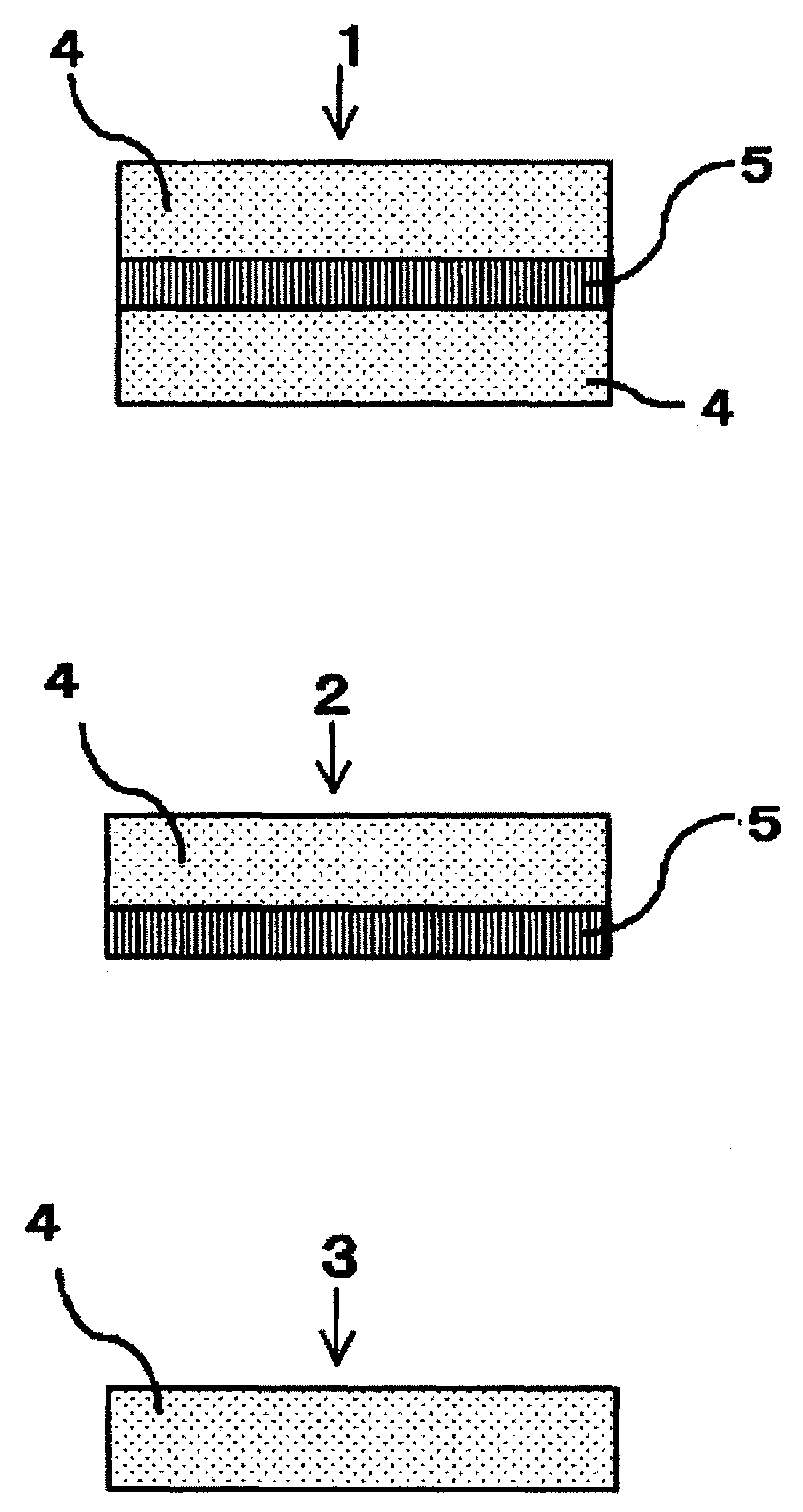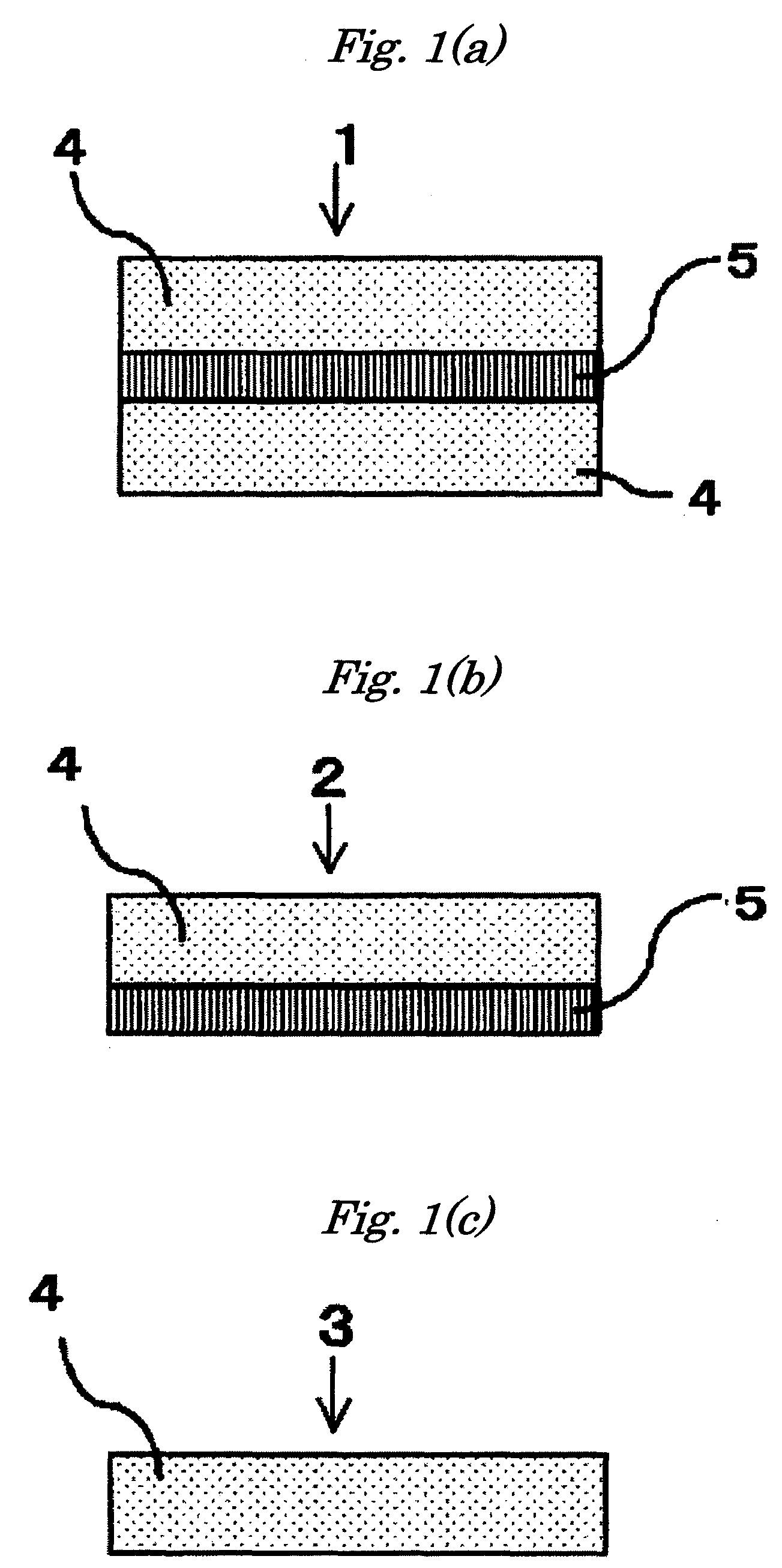Acrylic pressure-sensitive adhesive, acrylic pressure-sensitive adhesive layer and acrylic pressure-sensitive adhesive tape or sheet
a technology of pressure-sensitive adhesives and adhesive layers, applied in the direction of film/foil adhesives, impression caps, transportation and packaging, etc., to achieve the effect of small changes in adhesive performance and excellent adhesive performan
- Summary
- Abstract
- Description
- Claims
- Application Information
AI Technical Summary
Benefits of technology
Problems solved by technology
Method used
Image
Examples
example 1
Synthesis of Acrylic Polymer Syrup 1
[0145]After 65 parts by weight of 2-ethylhexyl acrylate (2EHA), 30 parts by weight of butyl acrylate (BA) and 5 parts by weight of acrylic acid (AA) as monomers, and 0.1 part by weight of “Irgacure-651” (trade name) (manufactured by Ciba Specialty Chemicals Corp.) as a photopolymerization initiator were blended, nitrogen gas was blown thereinto to remove dissolved oxygen. Thereafter, an ultraviolet ray was irradiated to a viscosity (BH viscometer, No. 5 rotor, 10 rpm, measuring temperature: 30° C.) of about 15 Pa·s to prepare acrylic polymer syrup 1) in which the monomers were partially polymerized.
[0146]After 100 parts of cyclohexyl methacrylate (CHMA) and 3.5 parts by weight of thioglycolic acid were blended, nitrogen gas was blown thereinto to remove dissolved oxygen. Subsequently, the temperature was raised to 90° C., and 0.005 part by weight of Perhexyl O (manufactured by NOF Corp.) and 0.01 part by weight of Perhexyl D (manufactured by NOF C...
example 2
Synthesis of Acrylic Polymer Syrup 2
[0149]Acrylic polymer syrup 2) was obtained by the same preparation method as in the synthesis of acrylic polymer syrup 1) except that 55 parts by weight of 2-ethylhexyl acrylate (2EHA) and 40 parts by weight of butyl acrylate (BA) were used in place of 65 parts by weight of 2-ethylhexyl acrylate (2EHA) and 30 parts by weight of butyl acrylate (BA).
[0150]With 100 parts by weight of acrylic polymer syrup 2) obtained by the above method, 0.1 part by weight of hexanediol diacrylate and 20 parts by weight of the above acrylic oligomer 1) were blended to obtain an acrylic pressure-sensitive adhesive composition.
[0151]An acrylic pressure-sensitive adhesive tape was obtained by the same preparation method as in Example 1.
example 3
Synthesis of Acrylic Polymer Syrup 3
[0152]Acrylic polymer syrup 3) was obtained by the same preparation method as in the synthesis of acrylic polymer syrup 1) except that 55 parts by weight of 2-ethylhexyl acrylate (2EHA) and 40 parts by weight of octadecyl acrylate (ODA) were used in place of 65 parts by weight of 2-ethylhexyl acrylate (2EHA) and 30 parts by weight of butyl acrylate (BA).
[0153]With 100 parts by weight of acrylic polymer syrup 3) obtained by the above method, 0.1 part by weight of hexanediol diacrylate and 20 parts by weight of the above acrylic oligomer 1) were blended to obtain an acrylic pressure-sensitive adhesive composition.
[0154]An acrylic pressure-sensitive adhesive tape was obtained by the same preparation method as in Example 1.
PUM
| Property | Measurement | Unit |
|---|---|---|
| Tg | aaaaa | aaaaa |
| temperature | aaaaa | aaaaa |
| Tg | aaaaa | aaaaa |
Abstract
Description
Claims
Application Information
 Login to View More
Login to View More - R&D
- Intellectual Property
- Life Sciences
- Materials
- Tech Scout
- Unparalleled Data Quality
- Higher Quality Content
- 60% Fewer Hallucinations
Browse by: Latest US Patents, China's latest patents, Technical Efficacy Thesaurus, Application Domain, Technology Topic, Popular Technical Reports.
© 2025 PatSnap. All rights reserved.Legal|Privacy policy|Modern Slavery Act Transparency Statement|Sitemap|About US| Contact US: help@patsnap.com



